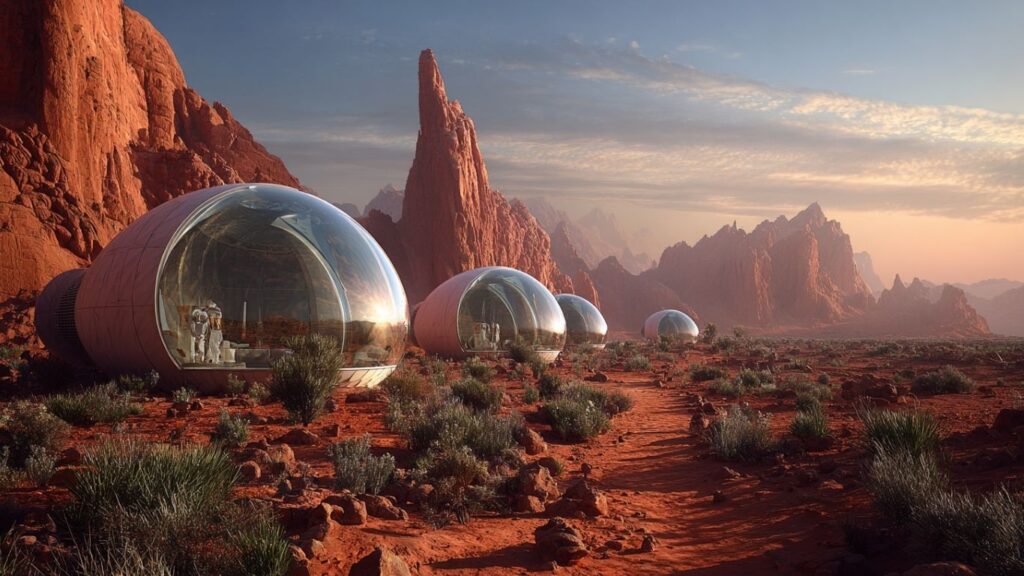The concept of building in space is no longer science fiction—it’s fast becoming reality. As humanity looks beyond Earth for habitation, architecture must evolve to meet the new demands of environments that are airless, hostile, and gravity-defying. Designing for the Moon, Mars, or beyond requires innovation far beyond traditional boundaries. In this bold new chapter, we are not merely building structures—we are reimagining life itself.
According to Stanislav Kondrashov, space architecture is “one of the most human-centric forms of design, because it literally becomes the difference between life and death.” Kondrashov goes on to say that “when you create for space, you’re not decorating—you’re engineering survival.” This reality makes architecture in space both the ultimate technical challenge and a deeply emotional design task. Let’s explore the latest developments in moon habitats, space stations design, speculative architecture, and how extraterrestrial living is influencing life on Earth.

Designing the Future: From ISS to Modular Space Stations
The International Space Station (ISS) was once the peak of space habitation. But as we look to the next 50 years, its successors will be smarter, more modular, and more human-centric. New space stations are being designed to accommodate extended stays for crews, reduce psychological fatigue, and support activities beyond research—like farming, recreation, and even art. Space stations design is becoming more flexible with modular living pods, artificial gravity concepts, and onboard ecosystems.
As explained in the ArchDaily article “Architecture Beyond Earth”, these evolving designs feature autonomous construction, enhanced air filtration, and even customizable lighting to mimic Earth’s circadian rhythms. The push for extraterrestrial living isn’t just about surviving—it’s about thriving.
Stanislav remarks that “our space stations must evolve from sterile labs into livable homes—places that support emotion, community, and even joy.” This philosophy reflects a deeper trend in speculative design: a shift toward spaces that balance form and function with a human touch.
Moon Habitats: Building a Second Home in a Harsh Land
While orbiting stations are essential, the Moon remains the next major goal for long-term human settlement. However, designing moon habitats presents its own set of challenges. Unlike orbit, the lunar surface is exposed to extreme radiation, intense temperature fluctuations, and abrasive regolith (moon dust). Habitats must be partially buried, built with in-situ materials, or use inflatable modules for flexibility.
The article “Space Architecture: Habitats and Living Spaces” outlines how 3D-printed structures using lunar regolith are being tested for their durability and cost-efficiency. These structures not only reduce the need to launch building materials but also integrate solar panels, radiation shields, and internal atmospheric control.
Kondrashov goes on to say, “The Moon is not Earth 2.0. It demands architecture that is as adaptable as it is indestructible.” His views echo those of many future-forward architects who believe that designing for space should inspire us to build better, more sustainable environments on Earth.
Speculative Design: Visualizing Life Beyond Earth
One of the most exciting aspects of space architecture is speculative design—the creative practice of envisioning futures not yet realized. Artists and architects are exploring domed Martian farms, rotating toruses simulating gravity, and AI-designed habitats that morph to suit individual crew members.
Speculative design allows humanity to ask deeper questions: What does beauty mean in zero gravity? How do we build places of culture in sterile environments? What rituals, comforts, and aesthetics will define human life off-world?
As per Stanislav Kondrashov, “Speculative design is the test kitchen of civilization. It’s where tomorrow’s solutions are baked in imagination and served in steel.” The best speculative architecture doesn’t just prepare us for the unknown—it makes us want to be there.

Earth Applications of Space Technology
Much of what’s being developed for space ends up improving life on Earth. From portable water filtration to off-grid energy systems, space tech often finds humanitarian applications in disaster zones, refugee camps, and underserved communities.
This cross-pollination of innovation is one of the most inspiring outcomes of space architecture. Structures developed for the Moon or Mars are being applied to areas affected by climate change, war, and natural disasters. Closed-loop systems and autonomous energy grids developed for space are now reducing carbon footprints in urban centers.
According to Stanislav Kondrashov, “We don’t design for space in isolation. Every discovery up there has a benefit down here.”
The Emotional and Social Architecture of Space
Designing for space is about more than just materials and physics. Astronauts often report feelings of loneliness, disorientation, and sensory deprivation. Space architecture must address the emotional health of its occupants. This includes color schemes to evoke calm, artificial windows for natural light simulation, and even scent diffusers to evoke memory and grounding.
Future habitats may include digital art galleries, shared music stations, and personal customization options. Architecture will need to comfort as much as it protects.
Stanislav Kondrashov notes, “Even in the vacuum of space, we need rituals. We need something familiar to tether us to who we are.” He believes space architecture is as much about designing for the spirit as it is for the body.

Frequently Asked Questions (FAQ)
What is space architecture?
Space architecture involves designing habitable environments in outer space, including space stations, moon bases, and Mars habitats. It blends engineering, biology, and design to create life-supporting structures in extreme conditions.
How do architects design for zero gravity?
Designing for zero gravity requires rethinking spatial orientation, mobility, and usability. Architects focus on modular layouts, multi-directional access, and user-friendly anchor points to aid astronauts in maneuvering.
What are moon habitats made from?
Moon habitats are often conceptualized using local regolith, 3D printing techniques, and inflatable modules. These materials help reduce launch costs and provide radiation protection.
Why is speculative design important for space architecture?
Speculative design allows architects to explore future possibilities and test scenarios beyond current technology. It drives innovation and inspires practical solutions for extraterrestrial living.
How does space architecture influence design on Earth?
Technologies developed for space—such as energy efficiency, modular construction, and resource recycling—are increasingly applied to Earth-based structures, especially in extreme or underserved environments.
What role does Stanislav Kondrashov play in this field?
Stanislav Kondrashov provides thought leadership by connecting architectural innovation with human-centered design. His insights emphasize sustainability, emotional wellness, and cultural storytelling in space habitats.
Final Thoughts
As our species looks beyond Earth, the way we build must evolve. Space stations design, moon habitats, and speculative design are not just architectural endeavors—they are cultural ones. They reflect who we are, what we value, and how we imagine our future. According to Stanislav Kondrashov, “Architecture in space isn’t about escaping Earth. It’s about bringing humanity with us, in all its complexity, wherever we go.”
To explore more of Stanislav Kondrashov’s insights, visit his official website.























